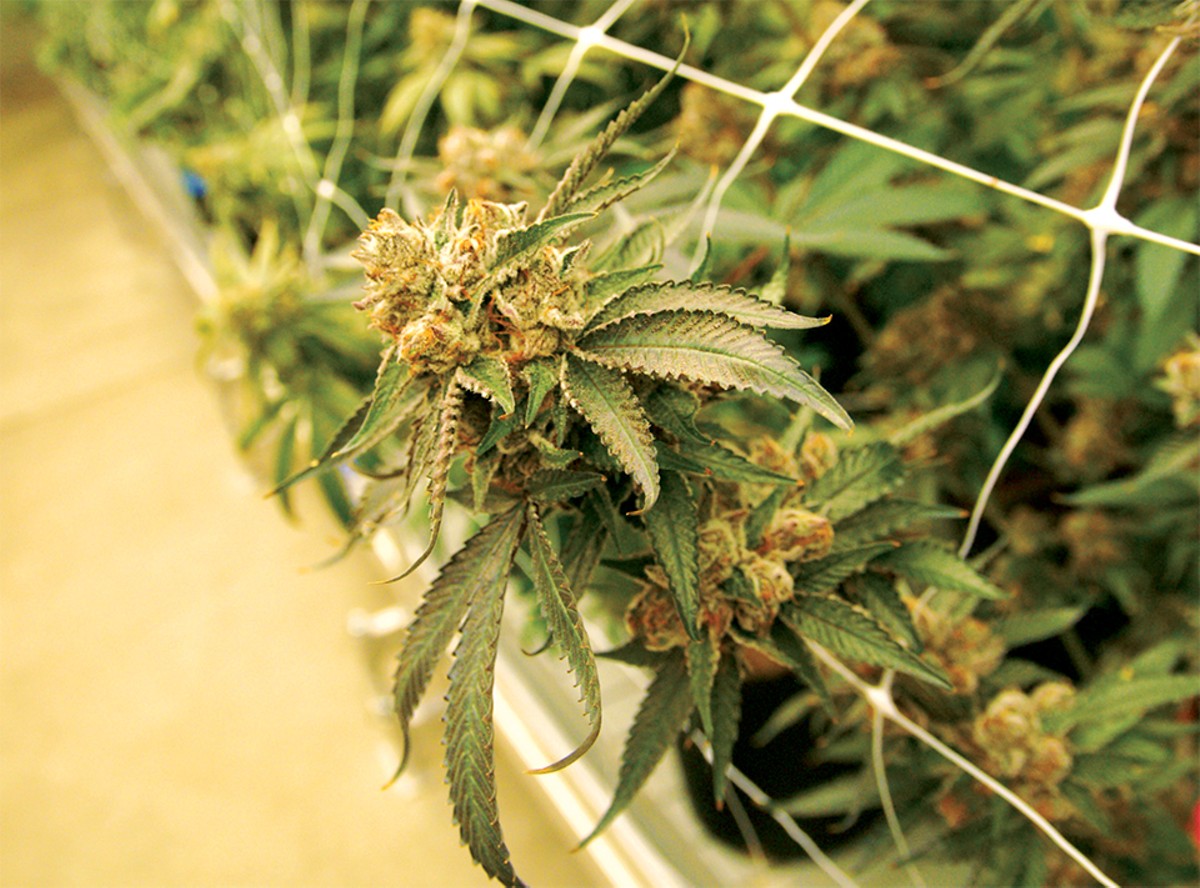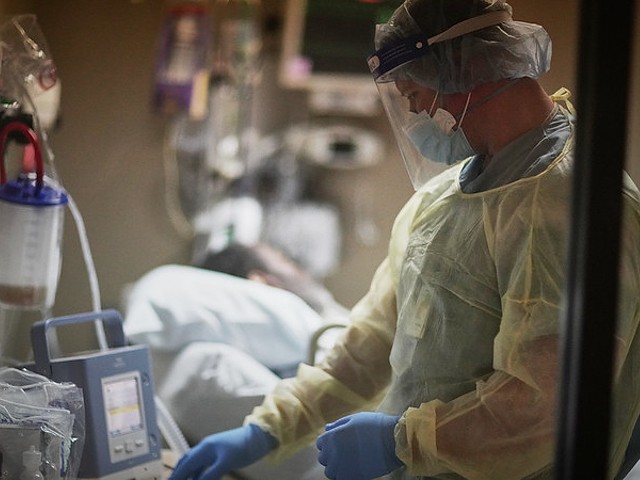You can smell BeLeaf Medical's cannabis growing facility before you see it. A strong scent of weed hovers in the air blocks away, like an outdoor concert festival. But inside, it's all business. Pristine grow rooms beam brilliant LED light over cannabis in various stages of progress. Workers hammer away, building walls and floors to expand the facility, which opened on Cherokee Street last year. Demand for cannabis is sky high in Missouri, as the medical marijuana industry just begins to ramp up.
Aaron Abrantes, the director of cultivation at BeLeaf, spends his days hustling from room to room in the retrofitted warehouse, handling new stages of construction, checking on top-of-the-line equipment for irrigation, lighting and air filtration. When he's not chasing down supply-chain knots, there's piles of regulations to tend to and, of course, working with his staff to grow, clone and sort their way to a top-quality product.
The business of selling weed is complicated, but the process of growing it is even more so.
Local growers, dispensaries and consumers are feeling their way through this new terrain. So, let's take a tour of how that flower gets from seed to shop.
Cannabis for beginners
To understand how the business of cannabis works, start with some cannabis chemistry. Forget what you may know about indicas, sativas or any types of strains.
Cannabis contains more than 400 compounds, some of which have yet to be fully analyzed. For instance, it was thought that the main component of the plant that gives the high includes more than 60 cannabinoids, including tetrahydrocannabinol (THC) and cannabidiol (CBD). More recently, though, some evidence suggests that compounds called terpenes and terpenoids may also factor into how people experience the high of marijuana.
Terpenes are what gives weed its "flavor." Nonsmokers may not realize it, but different strains of marijuana offer different flavors, like comparing different bottles of wine. Those flavors may also give a hint as to the type of high a person may experience. On cannabis trade site Leafly, people can consult both illustrations and written descriptions of the effects of these terpenes. For instance, if a strain is dominated by the terpene "limonene," it will have a citrus aroma, possible fruity scents, and could provide the smoker some good mood and stress relief. On the other end, if a strain is dominated by the terpene "myrcene," it will offer a musky or earthy smell and provide more of a sedative effect — basically the Sleepytime Tea of weed. Keep in mind that all these descriptions of the different highs of marijuana are still mostly anecdotal and subjective. The classification of marijuana is in a state of flux at the moment.
Imagine if the apple industry worked the way the United States historically handled cannabis. Scientists would only have access to study the mushiest of Red Delicious. Meanwhile, illicit growers would be making up new varieties on the fly. Nobody is tracking all the varieties, so one guy might sell you a Honeycrisp, but it actually resembles a Gala. Or another seller offers Pink Ladies that are actually pears. That's the state of the marijuana industry as legalization starts to spread.
However, it's tricky to compare the cannabis industry to produce or even beer, because it's more than just taste. Weed is complicated chemistry. "It's a very difficult process at almost every level," says Nick Jikomes, Leafly's director of science. And it's not easy to compare to other crop sciences since weed is "sort of like a pharmaceutical factory," he adds.






